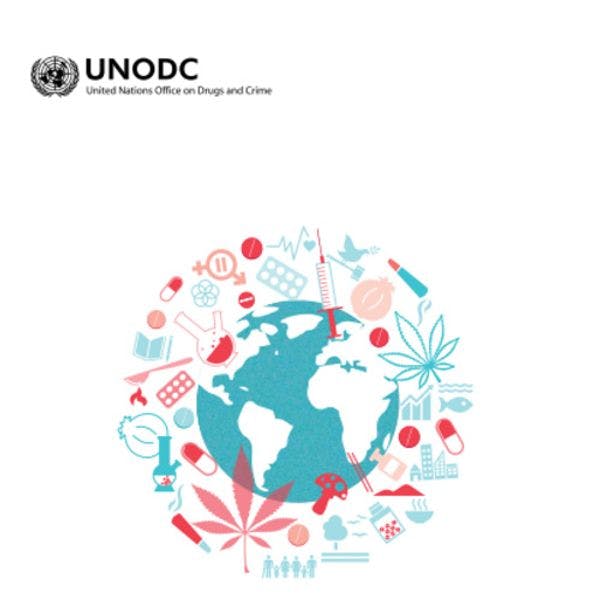World drug report 2016
“We reiterate our commitment to strengthen our efforts in addressing and countering emerging and persistent challenges and threats of all aspects of the world drug problem … and we recommend the following: … promote, as appropriate, the use and analysis of relevant, reliable and objective data … to improve the implementation of comprehensive, integrated and balanced national drug control strategies, policies and programmes … and encourage the sharing of best practices and lessons learned.”
Outcome document of the special session of the General Assembly on the world drug problem, entitled “Our joint commitment to effectively addressing and countering the world drug problem”
The World Drug Report 2016 is published in the wake of the landmark moment in global drug policy, the special session of the General Assembly on the world drug problem. Chapter I provides a global overview of the supply of and demand for opiates, cocaine, cannabis, amphetamine-type stimulants (ATS) and new psychoactive substances (NPS), as well as their impact on health. It also reviews the scientific evidence on polydrug use, treatment demand for cannabis and developments since the legalization of cannabis for recreational use in some parts of the world. Chapter II focuses on the mechanisms of the interaction between the world drug problem and all aspects of sustainable development through the lens of the Sustainable Development Goals.
Drug use and its health consequences
It is estimated that 1 in 20 adults, or a quarter of a billion people between the ages of 15 and 64 years, used at least one drug in 2014. Roughly the equivalent of the combined populations of France, Germany, Italy and the United Kingdom, though a substantial amount, it is one that does not seem to have grown over the past four years in proportion to the global population. Nevertheless, as over 29 million people who use drugs are estimated to suffer from drug use disorders, and of those, 12 million are people who inject drugs (PWID), of whom 14.0 per cent are living with HIV, the impact of drug use in terms of its consequences on health continues to be devastating.
With an estimated 207,400 drug-related deaths in 2014, corresponding to 43.5 deaths per million people aged 15-64, the number of drug-related deaths worldwide has also remained stable, although unacceptable and preventable. Overdose deaths contribute to between roughly a third and a half of all drug-related deaths, which are attributable in most cases to opioids. The time period shortly after release from prison is associated with a substantially increased risk of death from drug-related causes (primarily as a result of drug overdoses), with a mortality rate much higher than from all causes among the general population.
In many countries, prisons remain a high-risk environment for infectious diseases, which is a significant concern for prison health. A number of studies report high levels of drug use in prison, including the use of opiates and injecting drug use. In addition, the prevalence of HIV, hepatitis and tuberculosis among persons held in prison can be substantially higher than among the general population. However, despite the high-risk environment and scientific evidence for effective health interventions, there are significant gaps in prevention and treatment services in many prisons around the world.
PWID experience some of the most severe health-related harms associated with unsafe drug use, overall poor health outcomes, including a high risk of non-fatal and fatal overdoses, and a greater chance of premature death. One in seven PWID is living with HIV, and one in two with hepatitis C. PWID are a key at-risk population for HIV and hepatitis, with almost a third of new HIV infections outside sub-Saharan Africa occurring among PWID. Moreover, studies have found people who inject stimulants to engage in more risky sexual behaviours, resulting in a higher risk of HIV infection than for those injecting opiates.
Cannabis remains the most commonly used drug at the global level, with an estimated 183 million people having used the drug in 2014, while amphetamines remain the second most commonly used drug. With an estimated 33 million users, the use of opiates and prescription opioids is less common, but opioids remain major drugs of potential harm and health consequences. The fact that a sharp increase in heroin use has been documented in some markets (particularly North America) where it was previously declining, shows that heroin remains one of the major drugs of public health concern.
Keep up-to-date with drug policy developments by subscribing to the IDPC Monthly Alert.
